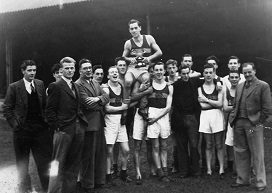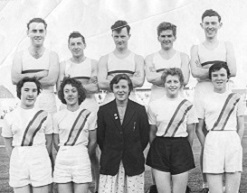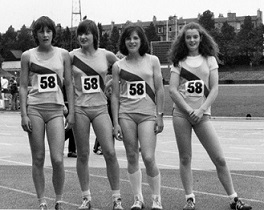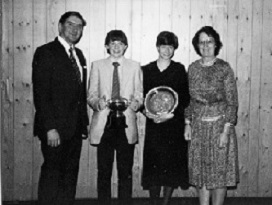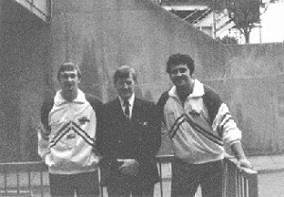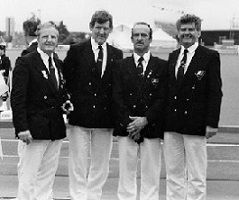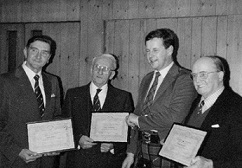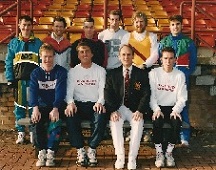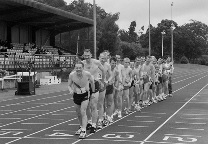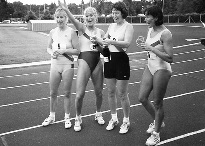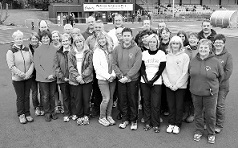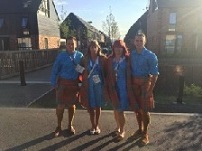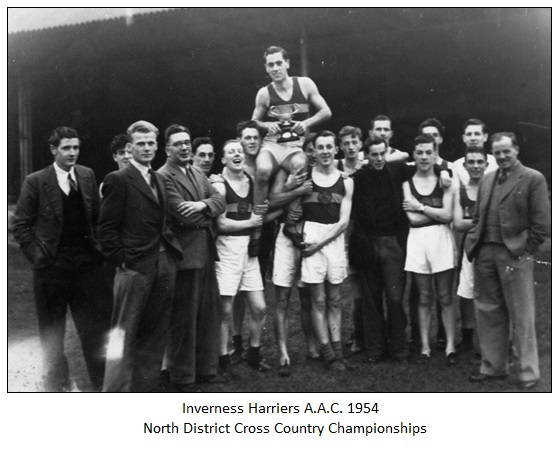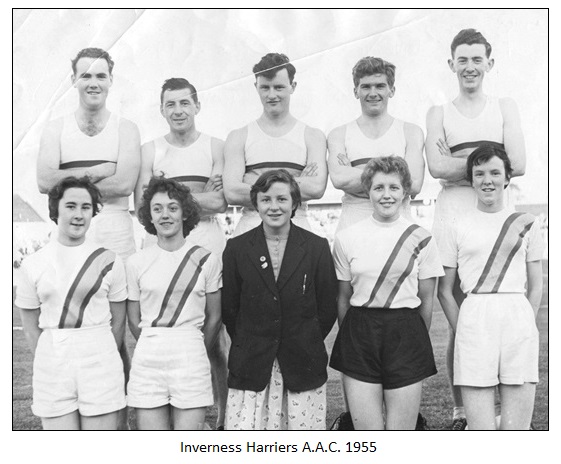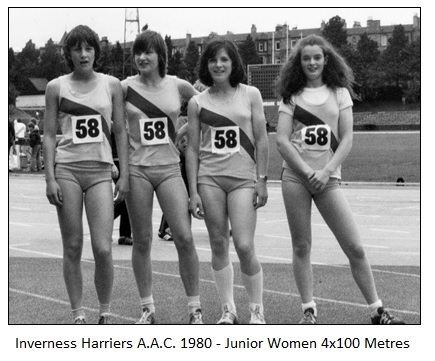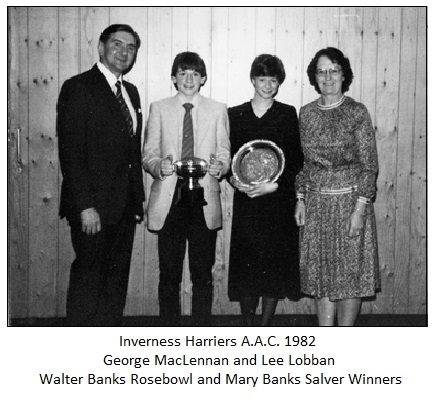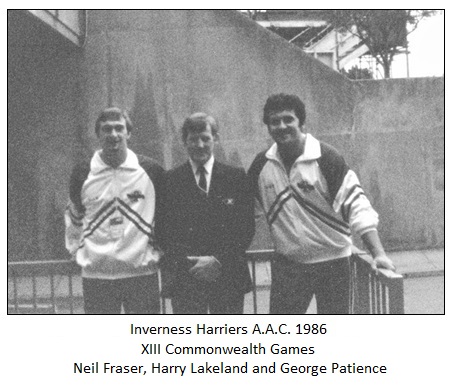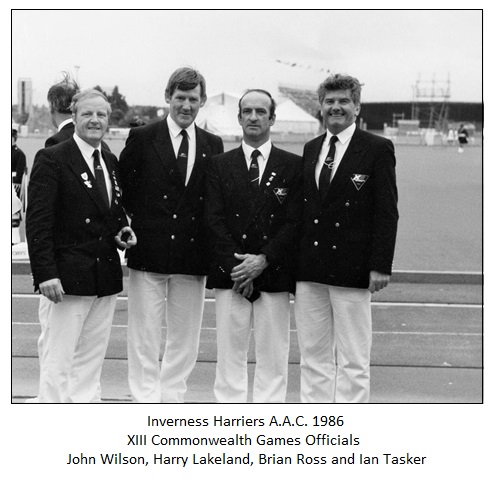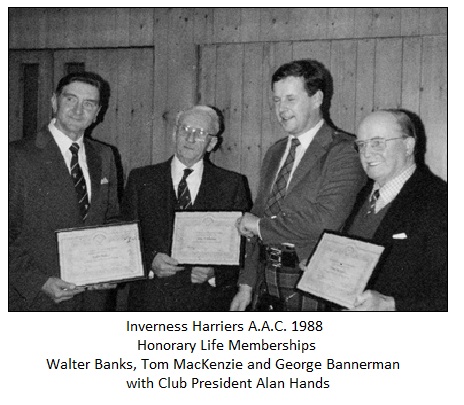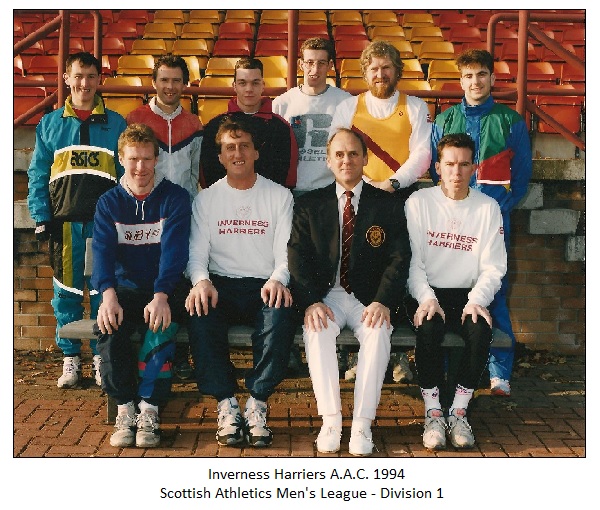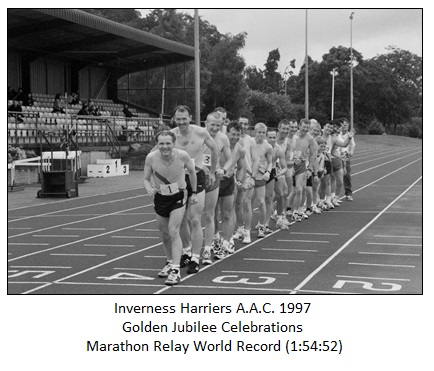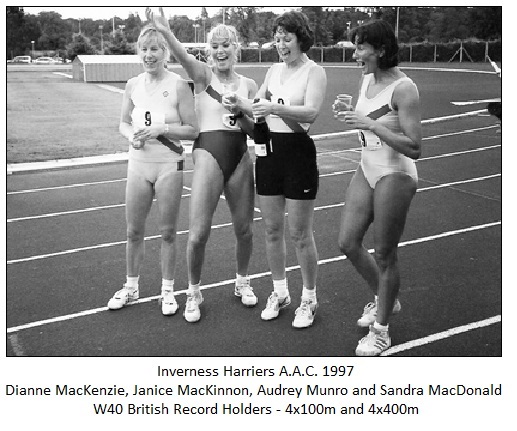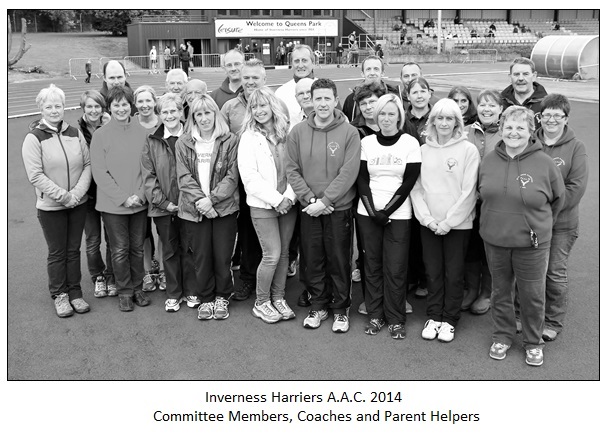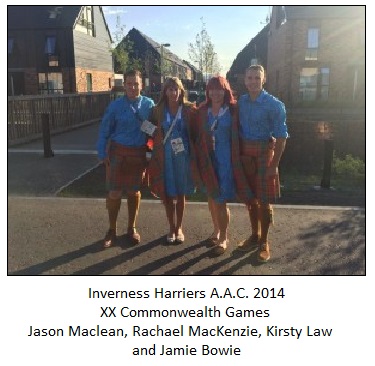Club History

Modest Beginnings (1947-69): Since the club was formed just after the end of the 1947 summer season, little if anything else appears to have happened until training began the following spring. Formal, organised whole-club, 12 months a year sessions were not introduced until the late 70s although outwith the summer, various smaller groups, especially of endurance runners, do appear to have become active on their own initiative. Virtually no first hand accounts of the very earliest years survive, but it looks likely that training for a short and sparse three month summer season would have begun in April 1948 – apparently at the Northern Meeting Park before a fairly early move to the Bught. The early history of Inverness Harriers reveals a very similar pattern of a club which saw its function as entering athletes for the limited range of sports meetings around the local area. The sport, it seems, barely existed beyond the Highland line in the eyes of these early pioneers. Poor transport links were doubtless a major factor, as well as expense in an era of austerity. However visiting teams from the South had to travel and these inward looking attitudes would take a long time to change. There was very little concept of the wider athletics world – or of the potential of Inverness athletes to compete successfully in it. By the early 1960′s, Inverness Harriers had clearly got into poor shape as a club and existence was effectively in name only from 1961-69.
Brief Renaissance (1969-75): After much of the 1960′s had been spent in the doldrums, 1969 was a good time to attempt a revival and that was just what a few pioneering individuals went out and did. The club was reconstituted and those taking up the baton again were a blend of the old guard and a new regime. With the reformation, the club moved premises and started training at Fraser Park, Kingsmills. Up until this period, the club was exclusively comprised of Senior athletes, however, the club started to evolve by introducing a junior section and within six months had already reportedly expanded to 70 junior members from the age of six upwards. After two years at Fraser Park, the club had outgrown the venue and the following year that wish was granted with a return to the Bught, which remained the club’s home for the next 23 years. The extra space helped accommodate rapidly growing numbers of juniors from right across the town and beyond. There were now also performances at national level by members in unprecedented numbers in 1972. However, the following year things were on the wane again and by 1975 the club had shrunk to just 24 members. The 1976 season was absolutely central in the development of the club, with 22 club records being broken and lasting legacy was the adoption of the gold strip with the maroon diagonal which has been used ever since.
Lift Off (1976-81): After a limited and often uncertain existence during its first three decades, Inverness Harriers’ growth and development from the latter half of the 1970′s was quite astonishing. Membership statistics are just one of several performance indicators which all began to move rapidly upwards after the low point of 1975. These also included performance standards, the range of events contested, with the field undergoing an especially dramatic transition, level of competition aspired to and the number of coaches and officials available to ensure that a rapidly growing club operated smoothly. This period saw the club experience success at national level, with each success soon followed by another and by 1979 the rest of Scotland was looking out for the swelling tide of high performers among juniors suddenly coming out of Inverness. The club was now established as a significant national force in sprints, hurdles and jumps, with endurance athletes also making good progress. Throws would have to wait a few more years. In 1981, the Senior Women’s team would win the SWAL Division 4 title in their inaugural season and there would be the first of many Senior national vests for club athletes.
Continued Progression (1982-86): The achievements of 1976-81 were enormous, but it was during the next five seasons that Inverness Harriers really came of age as a major track and field club. The Senior Women’s team would once go on and claim the SWAL Division 3 title at the first time of asking and with it gain promotion. The 1983 season saw many of the club’s best ever athletes in place and already making a big impression on the national and international scenes, with a lot more still to come. The SWAL Division 2 was claimed the following season, so the team had gone straight from Division 4 to Division 1 in three consecutive seasons. A decade on from those tentative track and field beginnings of the mid-70′s, Inverness Harriers had become a major contributor to Scottish teams and had entered the British arena. Thanks latterly to a revolution in facility provision, there had been athletes at three international championships, a rising flood of national titles, plus medals and team performances which made even the bigger clubs look to their laurels as membership burst through 300. The ten years from 1976-86 had seen Inverness Harriers steadily establish itself as the North’s top endurance running club. A national cross country team title had been won along with a number of international honours, including one at the World Junior XC Championships.
More Halcyon Days (1987-1994): The club entered the Scottish Young Athletes’ League (SYAL) for the first time in 1987 and the following year the Junior Men’s team finished in second place. The Scottish champions were invited to the English auxiliary final in Birmingham but after turning the offer down, the club gladly accepted and although finishing last made a great impression. It just got better and better in the SYAL where Inverness Harriers won the 1989 final at just the third attempt. What no one foresaw was that this was the first of five titles in the six seasons from 1989-94 and with it an annual trip to the UK Finals in Birmingham. This was a formidable record for any club, never mind one based in a sparsely populated peripheral area. A very overdue development finally came in the spring of 1990 with entry to the SAL, the Men’s League, which had been discussed on and off since 1982. Inverness Harriers were by far the strongest team in Division 4 that summer and apart from the international athletes there were also other very solid contributors. Just like the women nine years earlier, this was a transition from Division 4 to Division 1 in straight seasons between 1990 and 1992.
Burst Bubble (1995-1997): At Inverness Harriers, the mid 1990′s saw a serious drop off in work ethic and commitment to sound conditioning, just when quite the opposite should have been an urgent priority. This would have devastating implications for performance standards for years to come. That fifth SYAL title in 1994 masked the fact that the decline in quality which had begun on the women’s side was now spreading and this time could not be absorbed by the parallel weakening of opponents. In 1997, for the first time in 20 years, there were no Inverness Harriers vests at the Scottish Senior Championships.
Jubilee and Beyond (1997-2005): The Golden Jubilee celebrations were not without their uncertainties. For a start, no one was sure about the precise date of formation, until Tom MacKenzie and an old Courier article fixed it at September 3rd, 1947. The official celebrations were held on September 6th 1997 which comprising an afternoon track and field meeting followed by a dinner in the Lochardil Hotel. The euphoria did not last long since at the AGM on September 22nd, there was a warning of possible withdrawal from some leagues. Although some talented youngsters were coming through, numbers continued to plunge. As membership headed towards a 20 year low of around 120, one summer training night in 1998 attracted just 12 athletes. Although the club had endured a difficult few years, 1999 brought with it another bubble of talent moving through and produced 23 separate national selections. Despite an attempt to introduce “standards awards” for the youngsters in 2005, there had been another loss of momentum in a club which was seriously stagnating again. The main area of optimism was a small number of top performers, including a nucleus of emerging young athletes.
Harriers to the Four (2006-2017): By this time the entire HIPPO organisation, in which Inverness Harriers were generally reluctant participants after an enthusiastic courtship, was beginning to struggle. They had to cancel their August open graded meeting due to lack of officials and this was taken up instead by the club. Soon after, the club took back under its own umbrella the whole series of meetings which it had founded in 1976. During a period of resurgence and even before the qualifying period for the 2014 Commonwealth Games in Glasgow, there was Gold & Maroon athlete representation at the Commonwealth Ultra Distance Mountain Running Championships in 2011. The two pinaccles of this period were undoubtedly the first medal won at a major championships by an Inverness Harrier [4x400m Gold at European U23 Championships in Ostrava, Czech Republic] and selection of four club members to represent Scotland at the XX Commonwealth Games, which brought the overall count to 24 athletes at major championships. Further success at major championships soon followed with 4x400m Bronze and Silver at the 2013 World Championships and 2014 World Indoor Championships, respectively.
Many Thanks to Charles Bannerman for permission to use extracts from Maroon and Gold: The Story of Inverness Harriers.





